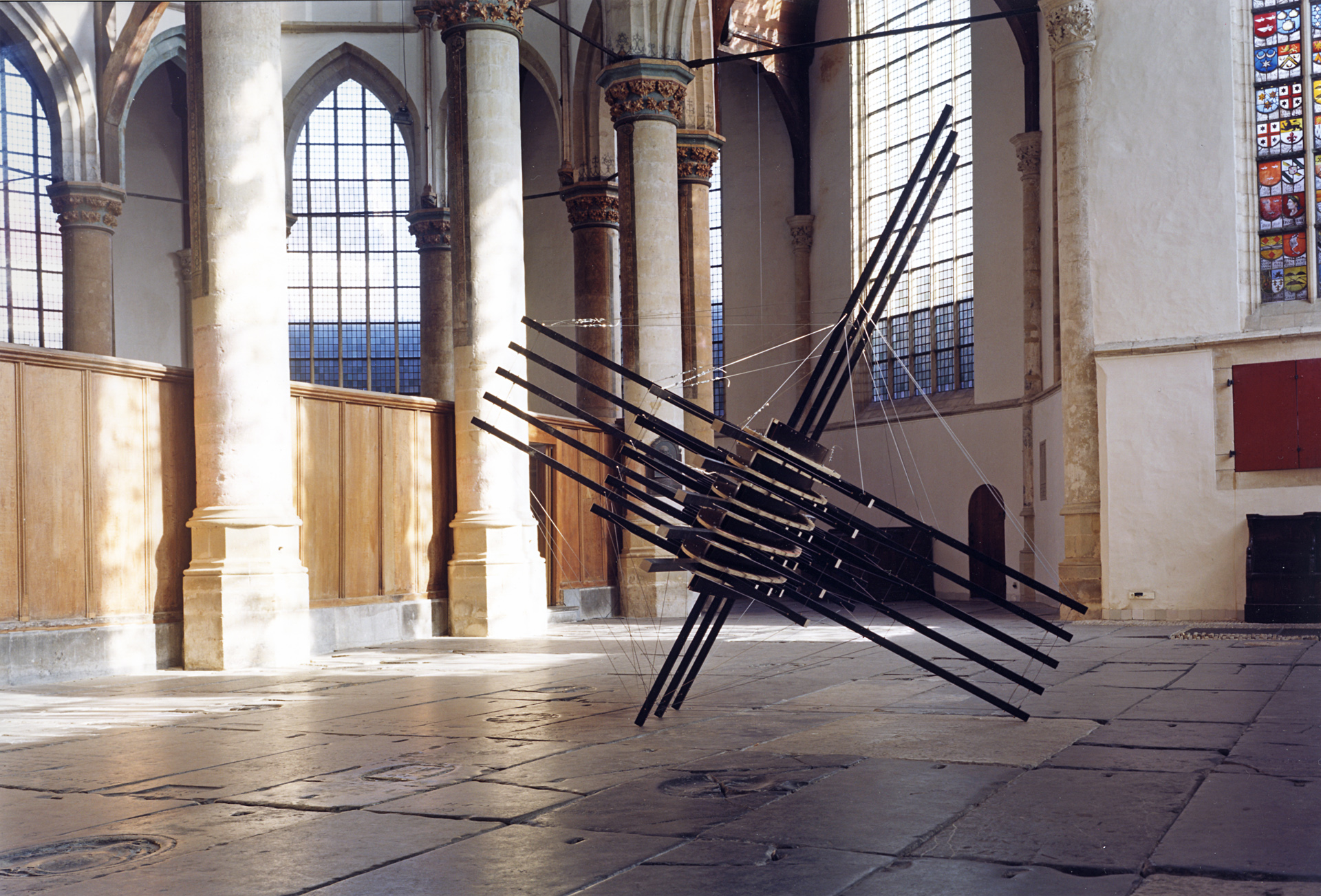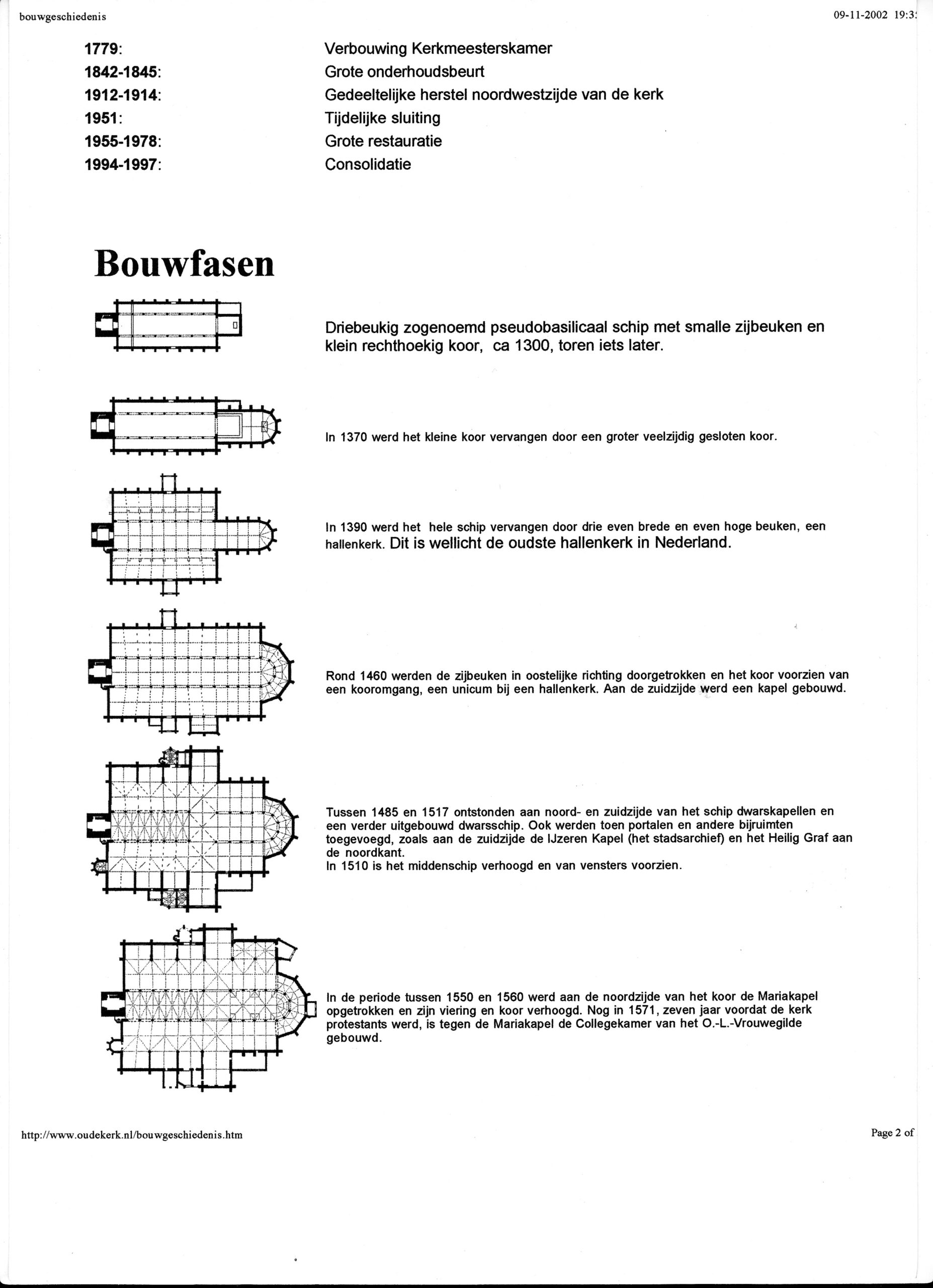When decisions receive a different interpretation, other images, spaces and buildings are created.
The Oude Kerk, Amsterdam’s most ancient monument, is located in the middle of the Wallen, the city’s red-light district. As soon as you enter the church from this hectic neighbourhood, you arrive in an oasis of calm. The church has the dimensions of a covered city square and is charged with symbolism. A distinctive feature of the interior is the enormous organ which is regularly played. Its grandiose sound makes the church seem even more spacious. Many centuries of building, expansion and refurbishment have contributed to the church’s monumental appearance. An accumulation of many thoughts and actions has created its present form.
location: Amsterdam, Netherlands
dimension: 380 x 390 x 420 cm
material: recycled construction plywood, square timber, concrete plywood, threaded rods, nuts, steel cables, tensioners, screws, black paint
exhibtion: De Laatste Ruimte (The Last Space)
venue: De Oude Kerk, Amsterdam
location KAPKAR / DOK-118: Buitenlandvaarderskapel
organization: Stichting RUIM
manufacture: Studio Frank Havermans
photography: © René de Wit, Breda
PUBLICATIONS
The KAPKAR/DOK-118 installation forms part of ‘De Laatste Ruimte’ (The Last Space) group exhibition. The title refers to the space in which you would like to die. You generally cannot choose the moment of your death, for this tends to arrive unexpectedly. So I took the venue for the exhibition as my starting point. The floor, and thus the floor plan, of the church is comprised entirely of tombstones and so compels you to think about death.
KAPKAR/DOK-118 is an installation which I developed from the church’s initial, thirteenth-century floor plan. My approach was to return to the original situation and develop a totally different form from the same floor plan. When decisions receive a different interpretation, other images, spaces and buildings are created.
KAPKAR/DOK-118 is not just an image in space, it is also an image of space. An imaginary and schematic model of the church as it might have been if different decisions had been taken, starting from the same original situation and following an alternative time line.



